MXA RACE TEST: 2021 YAMAHA YZ250FX CROSS-COUNTRY
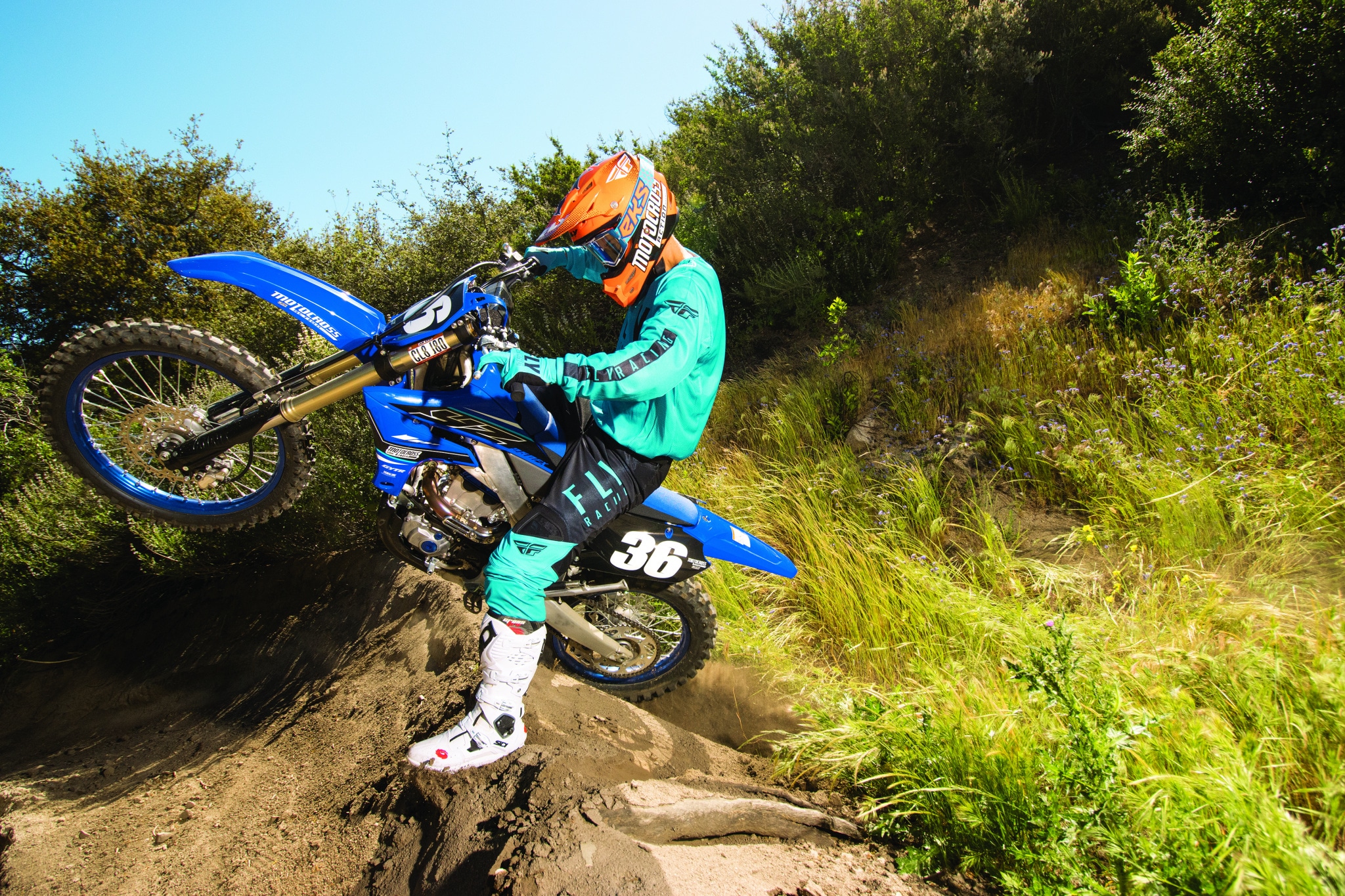
Q: FIRST AND FOREMOST, IS THE 2021 YAMAHA YZ250FX BETTER THAN LAST YEAR’S YZ250FX?
A: No, because it was totally redesigned in 2020 to take advantage of the ongoing improvements to the Yamaha YZ250F motocross model.
Q: WHAT MAKES THE 2021 YAMAHA YZ250FX DIFFERENT FROM THE MOTOCROSS-SPECIFIC YZ250F?
A: Cross-country bikes are a subset of off-road motorcycles that slot between pure motocross and enduro machinery. It is a compromise bike. The very nature of the term “cross-country” allows for a loose translation that it is a “cross” bike that is redesigned to be more amenable to covering open “country.” It has aspects of both, but it isn’t perfect for either specialty.
The engineers at Yamaha, Kawasaki, KTM, Honda, Husqvarna, TM, Beta and GasGas start with their base motocross models and drag them down the enduro aisle of the factory’s production line. When the bikes get to the end of the line, their hardcore motocross purpose has been altered by the addition of oversize fuel tanks, 18-inch rear wheels, more durable off-road tires, softer suspension, broader mapping, wide-ratio transmissions, O-ring chains, skid plates, hand guards, fuel gauges, quieter mufflers, kickstands and, logically, a higher price tag for the added components.
It is important to note that not every cross-country bike coming out of Japan, Austria or Italy gets the full complement of cross-country equipment—some make do with the close-ratio motocross gearbox, stock motocross fuel tank, standard ECU and often no hand guards or skid plate. All cross-country bikes are not created equal.
Which leads us to the 2021 Yamaha YZ250FX and the inevitable question of what changed and why? Here is a quick review.
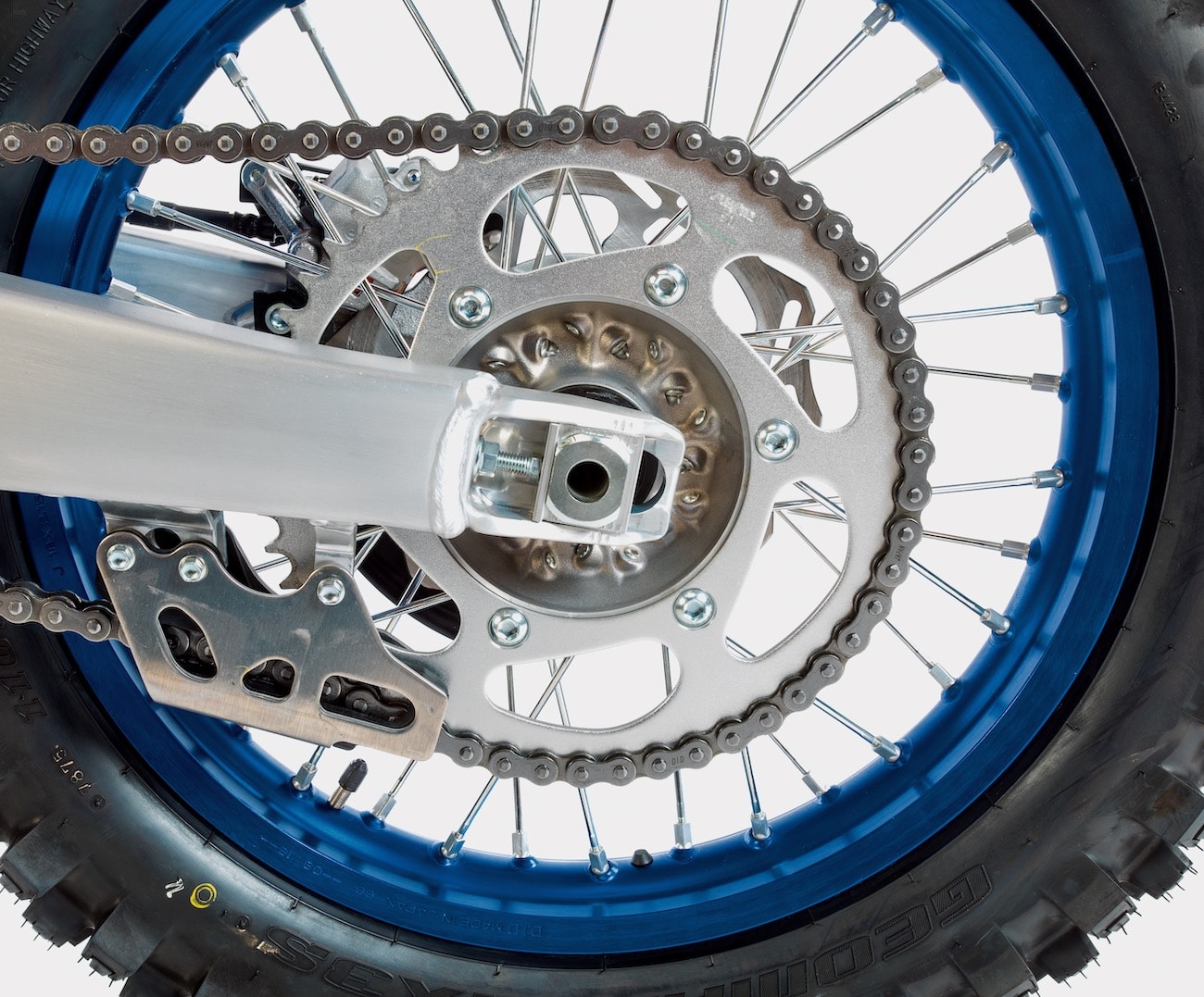
Q: WHAT ARE THE GEAR RATIO DIFFERENCES BETWEEN THE SIX-SPEED YZ250FX AND FIVE-SPEED YZ250F?
A: Compared to the five-speed YZ250F donor bike, the six-speed Yamaha YZ250FX has a much lower first gear. It is equivalent to adding seven teeth on the rear sprocket. Second gear on the YZ250FX is the equivalent of three teeth more. The YZ250FX’s third gear is very close to the YZ250F’s third gear. Fourth gear on the YZ250FX is two teeth taller, while fifth gear is three teeth taller than the YZ250F’s fifth gear. And for the kicker, the YZ250FX’s sixth gear is 10 teeth taller than the non-existent sixth gear on the YZ250F motocross transmission. All in all, the gear ratio range on the YZ250FX is 25 percent broader than on the motocross model.
Q: DOES THE YZ250FX SHARE THE SAME MOTOR MOUNTS AND HEAD STAYS AS THE YZ250F?
A: Yes and no. The upper head stays on the YZ250FX are the same as on the YZ250F, but the lower motor mounts are stiffer. The stiffer motor mounts make sense, in that the suspension settings are softer and the bike weighs more, so the frame will be flexing more.
Q: IS THE YAMAHA YZ250FX SUSPENSION DIFFERENT FROM THE YZ250F SUSPENSION?
A: Yes. Although they both share the Kayaba SSS forks and shock, the cross-country model’s forks have lighter valving, and the fork spring rate is reduced from 4.7 N/mm on the YZ250F to 4.6 N/mm on the YZ250FX. The shock spring rate is 56 N/mm on both the YZ250FX and YZ250F, but the FX gets softer valving. Based on having ridden both Eastern GNCC and Western WORCS events, we’d say that the YZ250FX comes out of the factory with GNCC-style suspension. It is softer, plusher and more forgiving than what the high speeds of West Coast-style off-road racing demand.
Q: WHAT MAPS ARE ACCESSIBLE VIA THE YZ250FX MAP BUTTON?
A: The Yamaha map button can be a little confusing, because it has two positions (blue light and no blue light). On the YZ250F motocross model, the bike comes off the showroom floor with the stock map in both positions. Yamaha does this so that the owner can install his own custom map or one of the four pre-programmed maps on the blue light and still have the stock map to compare to; however, the 2021 Yamaha YZ250FX has two different maps installed. When the map button’s blue light is turned off, the mapping is more responsive and quicker revving. If you push the button to turn the blue light on, you get a slower-revving engine response. In short, without the blue light, you have the base map, but with the blue light, you get a map for slower conditions that require more tractable power.
The MXA test riders didn’t like either map and used their smart phones to download a more aggressive motocross map from Yamaha’s Wi-Fi Power Tuner selection list. We left the stock map alone, not because it was the best all-around map, but because we thought it would serve as the more tractable map, given the YZ250FX’s ultra-low gear ratios. We then loaded the motocross map as the blue-light special.
The Yamaha YZ250FX has an on-the-fly map switch that lets you change maps while riding. This is good on varying terrain, where you might need a mellower map to climb a rocky trail or a more aggressive map to cross a stretch of flat terrain; however, changing maps on the fly is not a given, because the map switch is located inboard on the bars from the clutch perch and kill button. Use caution.
Q: WHAT’S INSIDE THE 2021 YZ250FX MUFFLER?
A: Every MXA test rider wanted more throttle response and quicker revs through the midrange, and while the new map helped immensely, there was still something keeping the YZ250FX from feeling spot-on. We stuck a T-handle into the end of the YZ250FX muffler and, sure enough, 7 inches down we hit a restrictor in the perf core. The baffle was there to provide a smoother, less abrupt low-to-midrange response and reduce the exhaust’s decibel levels.
Q: HOW DID THE BRAKES COMPARE BETWEEN THE YZ250FX AND THE YZ250F?
A: The front brake was workman-like and as good as a Yamaha brake gets. On the other hand, the rear brake felt grabby and wasn’t as well-modulated, especially on long, twisty downhills, where a lot of brake-dragging is common. The 2021 YZ250F and YZ450F dropped the 245mm rear rotor in favor of a downsized 240mm rear rotor, but the YZ250FX still has the larger rear rotor. The increased leverage on the brake system makes the rear brake feel touchy if used aggressively on downhills and fast sweepers.
Q: HOW MUCH GREATER IS THE YZ250FX’S FUEL CAPACITY COMPARED TO THE YZ250F’S?
A: The 2021 Yamaha YZ250FX gas tank holds 2.2 gallons of gas (the actual measurement is 2.16 gallons), which is more than the motocross model’s 1.6 gallons. For comparison, the KTM 250XCF holds 2.25 gallons, the Kawasaki KX250X holds 1.64 gallons, the Honda CRF250RX holds 2.25 gallons, the TM EN250 FI holds 2.51 gallons and the GasGas EX250 holds 2.25 gallons. Neither Beta, Suzuki nor Husqvarna make a 250cc cross-country model.
Be forewarned that 2.16 gallons of fuel won’t get a serious off-road rider very far off the beaten path, especially given that he had better turn around when the gas level drops below halfway. The Yamaha YZ250FX has a fuel-gauge idiot light that comes on when you have 1/2 a gallon of fuel left.
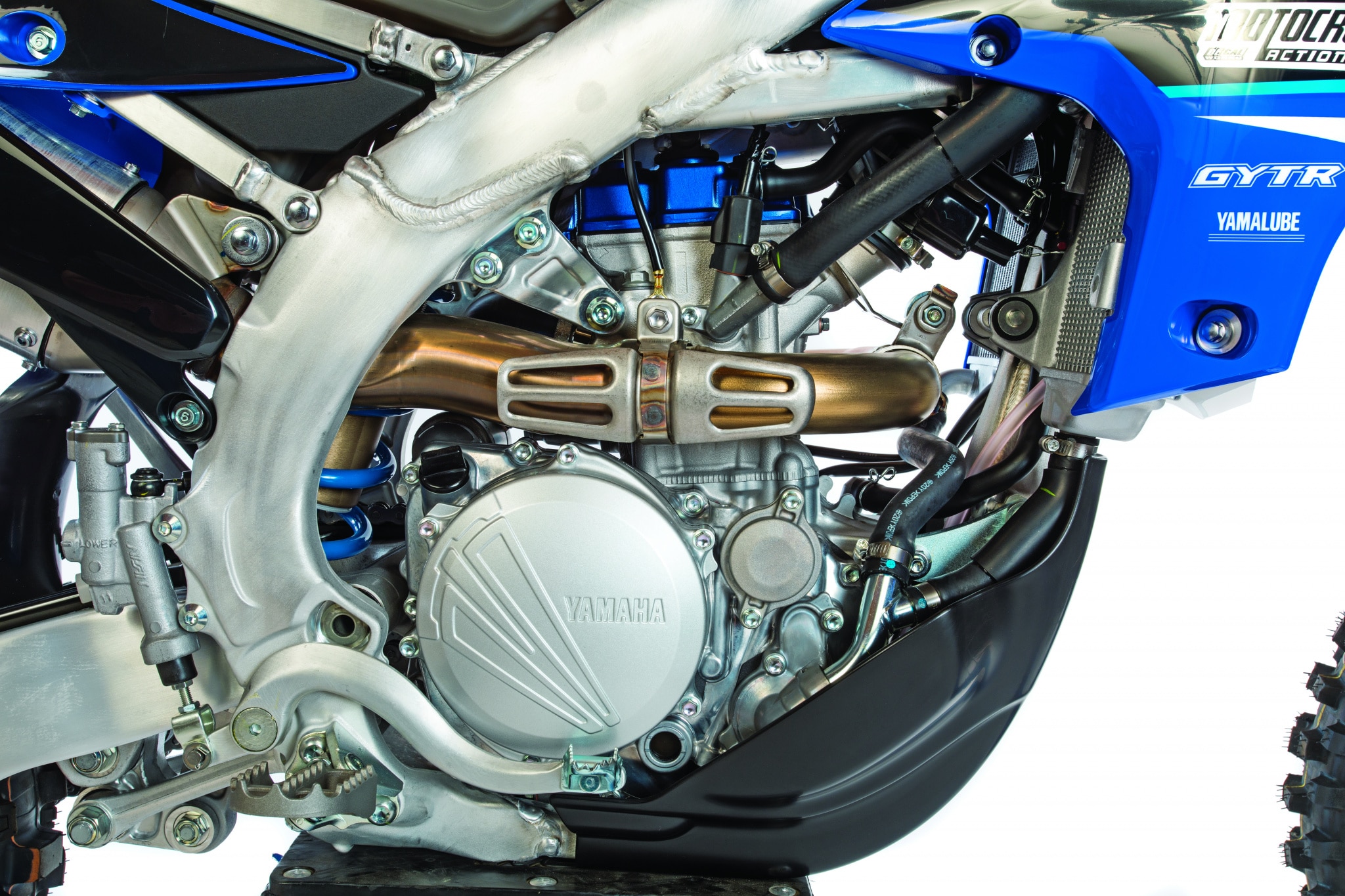
Q: WHERE DID YAMAHA PUT THE EXTRA FUEL ON THE 2021 YZ250FX?
A: Solutions to getting more fuel capacity vary with each brand. On single-top-tube frames, such as the KTMs, GasGas and Husqvarnas have, the fuel tank sits on both sides of the top tube, and you can only add fuel by extending the gas tank downward. On aluminum perimeter-framed bikes, the gas tank is cradled between the two frame spars, and you can only add fuel by extending the gas tank upward at the gas cap and outward at the radiator shrouds. Thanks to Yamaha’s backwards engine and front-mounted airbox, there is unused room where a traditional airbox would normally be. Yamaha extended the lower rear portion of the gas tank down and back.
Q: WHAT ABOUT THE 18-INCH REAR WHEEL?
A: The MXA wrecking crew is not snobbish when it comes to 18-inch rear wheels. We believe that for a certain spectrum of motocross riders and most off-road riders, the added plushness of the taller sidewalls, larger footprint and added squish can add suspension travel under a load; however, the MXA test riders don’t go to the trouble of switching our 19-inch wheels for 18-inchers or our 18s for 19s.
Our only caveat on the 2021 Yamaha YZ250FX is that Yamaha spec’ed Dunlop MX3S tires front and rear. The MX3S offers great intermediate-to-soft-terrain versatility, but it lacks durability. Most hard-core racers are willing to trade durability for performance, but the MX3S side knobs tear off the front tire if used on hardpack. Dunlop replaced the MX3S with the MX33; however, most MXA test riders prefer the MX3S front tire over the MX33—we just inspect the side knobs before every race.
The Dunlop MX3S is a great-performing intermediate-to-soft terrain motocross tire with a short lifespan and a tendency to throw knobs. We don’t see how on God’s green earth this is the proper tire to spec on a cross-country bike that faces constantly changing terrain.
Q: HOW MUCH DOES THE YZ250FX WEIGH COMPARED TO THE YZ250F?
A: The 2021 Yamaha YZ250F is no featherweight, but with the added off-road accessories, the YZ250FX weighs 11 pounds more than the YZ250F. That is over 10 pounds more than a KTM 450SXF, Husqvarna FC450 or GasGas MC 450.
Q: WHAT IS THE PRICE DIFFERENCE BETWEEN THE YZ250FX AND YZ250F?
A: Most cross-country bikes come with an upcharge. The $8499 Yamaha YZ250FX is $200 more expensive than the $8299 YZ250F. The added cash covers the addition of the six-speed wide-ratio transmission, large 2.16-gallon gas tank (compared to the 1.6-gallon tank on the motocross model), 18-inch rear wheel, kickstand, different muffler, O-ring chain, low-fuel warning light and skid plate.
Q: HOW DOES THE 2021 YAMAHA YZ250FX PERFORM?
A: Thanks to the updated and borrowed YZ250F engine, which includes a new piston, higher-compression ratio, updated valve train and cam timing, the power delivery is vastly improved over the pre-2020 YZ250FXs. The power is buttery smooth, with controllable but powerful low end and added power from mid to top. The extra revs come in handy, because some gears, like first gear, are too low, and others, like fifth and sixth, are Bonneville Salt Flats tall. The combo of great pick-up off the bottom and added revs allows the YZ250FX to pull through, whether you lug it or wind it out. The one caveat of the YZ250FX engine is that you will need to download the Power Tuner app to get the most out of this engine, because the installed maps need some help.
We did have issues with the six-speed gearbox, although surprisingly enough it wasn’t as much of a problem on a motocross track as it was off-road. On the track, we stuck with second, third and fourth gears, which weren’t that far off from the YZ250F motocross ratios. On the trail, we chased fourth, fifth and sixth a little too much. We always felt like there should have been a gear between the ones we chose. It wasn’t a deal-breaker, because we needed those high-speed gears (this was another area where remapping the ECU helped us pull through).
We love Kayaba SSS suspension, but, as you would expect, it was set up very soft. When we were picking our way up a rutted and rocky trail, we loved how compliant the forks were. They soaked up everything we threw at them when the going was technical, but once the trail opened up, the softness became a detriment. For our desert, mountain and scrub brush trails, we had to stiffen the fork with the YZ250F’s 4.7 N/mm springs, turn the clickers in and raise the oil height. If we lived in South Carolina, we probably wouldn’t complain.
It was blatantly obvious to us that most of the changes made to the YZ250FX make it more off-road worthy and a less-than-stellar performer on a motocross track. It is too soft, too slow, too heavy and too gappy for serious motocross. It could be made adequate with some suspension mods, new mapping, a slip-on muffler and time to figure out the best gearing (probably by adding teeth to the rear sprocket to allow it to work better in second, third and fourth).
All in all, this a fun bike to ride. And, best of all, it is a reliable mount that is trustworthy enough to take out to the desert or high into the mountains.
Q: WHAT DID WE HATE?
A: The hate list:
(1) Weight. The YZ250FX needs to go on a serious diet, but that will only happen when the YZ250F loses some serious pounds.
(2) Rear fender. When putting the bike up on the stand by the rear fender, the fender feels as if it is going to break off or cut your fingers off, whichever comes first.
(3) Width. The YZ250FX is bulky and wide. Testers don’t mind it until they jump on the much slimmer competition.
(4) Grips. We’d much prefer that every manufacturer switched over to lock-on-style grips.
(5) Clutch. The YZ250FX clutch has 20-percent-lighter clutch springs. This makes the lever easy to pull on the showroom floor, but don’t leave the showroom without getting stiffer clutch springs.
(6) Compression clickers. There is no room to get to the compression adjusters because the handlebars are in the way.
(7) Maps. The two stock YZ250FX maps aren’t very good. Perhaps Yamaha’s engineers should have thumbed through the Power Tuner app to find better ones before releasing the YZ250FX.
(8) Tires. We love the MX3S front tire, but we race on intermediate-to-soft dirt. These tires will throw knobs at the first sign of hardpack or a rock.
(9) Airbox. This is the not the optimum airbox design. The flat foam air filter gets dirty quickly, and dirt piles up at the back of the airbox. When you ride in the woods, the radiator shrouds scoop leaves, flowers and small birds into the airbox. And, most irritatingly, it is almost louder than the muffler.
(10) Hand guards. As a rule, trails are lined with brush, trees, yucca plants, cactus or saplings. Hand guards are a necessity not a luxury.
Q: WHAT DID WE LIKE?
A: The like list.
(1) Low-fuel light. When you’re having fun and your truck is three canyons away, the low-fuel light could save your bacon.
(2) Handling. The YZ250FX is stable and predictable at speed.
(3) Skid plate. We like that the YZ250FX comes with a skid plate, but we don’t like that it is barely adequate. Real off-road riding requires double this level of protection. Do yourself a favor, order a true-to-life off-road skid plate.
(4) Power. Love the engine—once new maps are installed.
(5) Fan-capable. The 2021 Yamaha YZ250FX is pre-wired to accommodate Yamaha’s $79.95 radiator fan kit (P/N B29-E24E0-V0-00) that can be added as an option.
(6) O-ring chain. O-ring chains are a value-added bonus for an off-road rider.
(7) Kickstand. It’s ultra-convenient to have on the trail when you want to stop and take in the view. We would like it to tuck in better and come with a rubber loop to add an extra measure of security
Q: WHAT DO WE REALLY THINK?
A: We’re thrilled that Yamaha updated the YZ250FX cross-country bike with better components and more thought than the original FXs. This is a big step up. If you’re looking for an off-road bike that you can race motocross on, the YZ250FX’s suspension will be too soft. But, by the same token, if you’re looking for a motocross bike that you can take on serious off-road rides, it will be too stiff. This is a compromise machine in a sport that doesn’t appreciate compromises.
MXA’S 2021 YAMAHA YZ250FX SETUP SPECS
This is how we set up our 2021 Yamaha YZ250FX for the track. We offer these settings to help steer you in the right direction.
KAYABA SSS FORK SETTINGS
The 2021 YZ250FX Kayaba SSS forks are well-tailored for slow- to medium-speed off-road riding. If you plan to race western Hare Scrambles, Grand Prix, WORCS or Big Six races, you will find the setup to be too soft. It will dive under hard braking, but, amazingly enough, the forks are very resistant to bottoming. We went in six clicks for better hold-up. The forks need to be stiffer to calm down the chassis’ pitching motion over rough ground. For hardcore racing, we recommend this fork setup for the 2021 Yamaha YZ250FX (stock specs are in parentheses):
Spring rate: 4.6 N/mm
Compression: 10 clicks out
Rebound: 10 clicks out
Fork-leg height: 7mm up
Notes: Riders lighter than 150 pounds should stay with 4.6 N/mm springs, while heavier riders would need 4.7 N/m springs (and 20cc of oil added to each fork leg).
YZ250FX KAYABA SHOCK SETTINGS
There are no spring-rate changes between the 2021 YZ250F and 2021 YZ250FX, which means that the softer feel comes from internal valving changes. Most MXA test riders worked with the low-speed compression damping until we got the shock in the sweet spot and then made all the remaining adjustments with the high-speed compression dial (stock specs are in parentheses):
Spring rate: 56 N/mm
Race sag: 105mm
Hi-compression: 3/4th of a turn out (1 turn out)
Lo-compression: 6 clicks out (10 clicks out)
Rebound: 10 clicks out
Notes: If you have less than 30mm of free sag, think about going to a softer 55 N/mm spring rate. We went in 1/4 turn on the high-speed compression to find more hold-up in the rear.


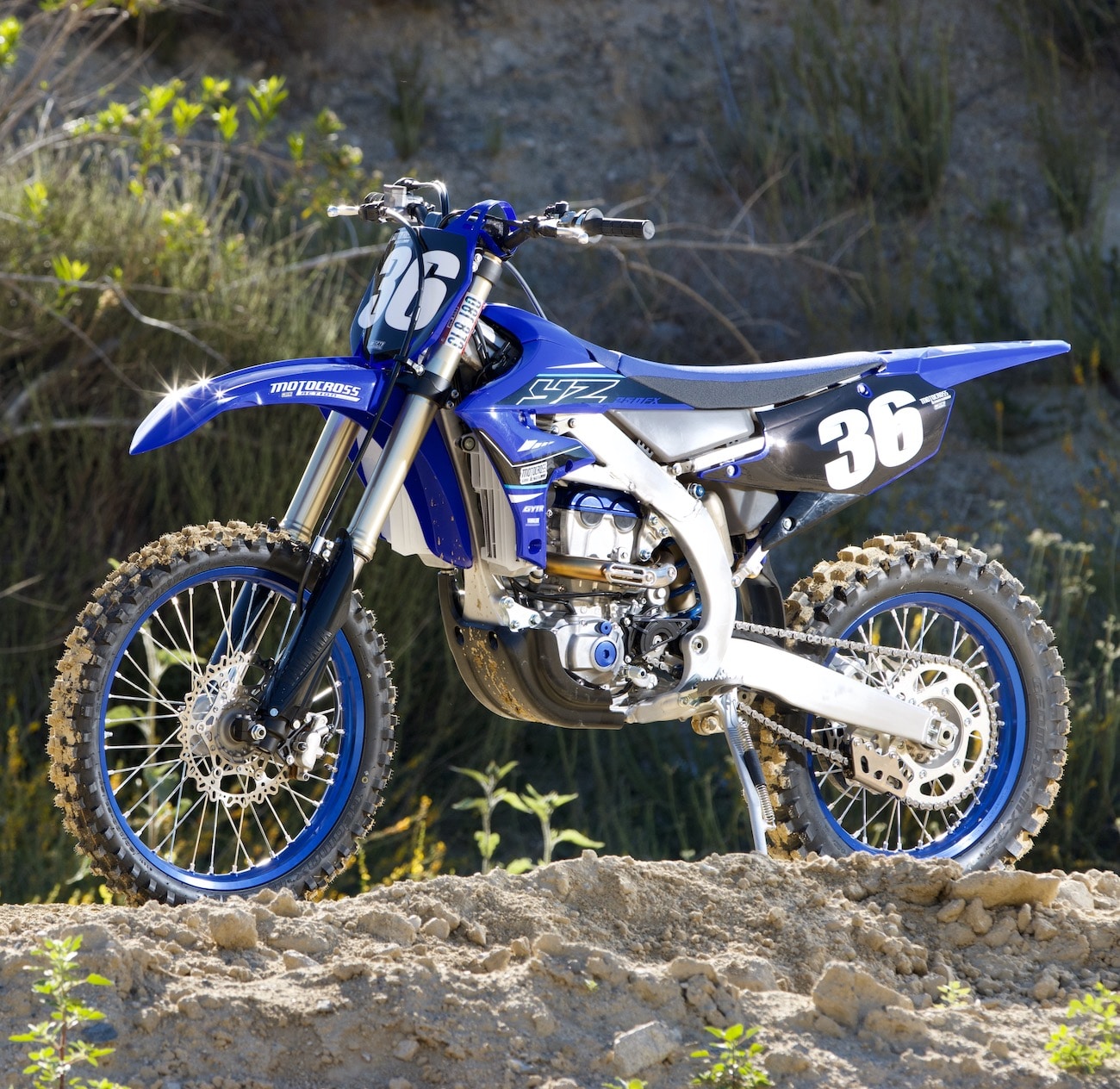
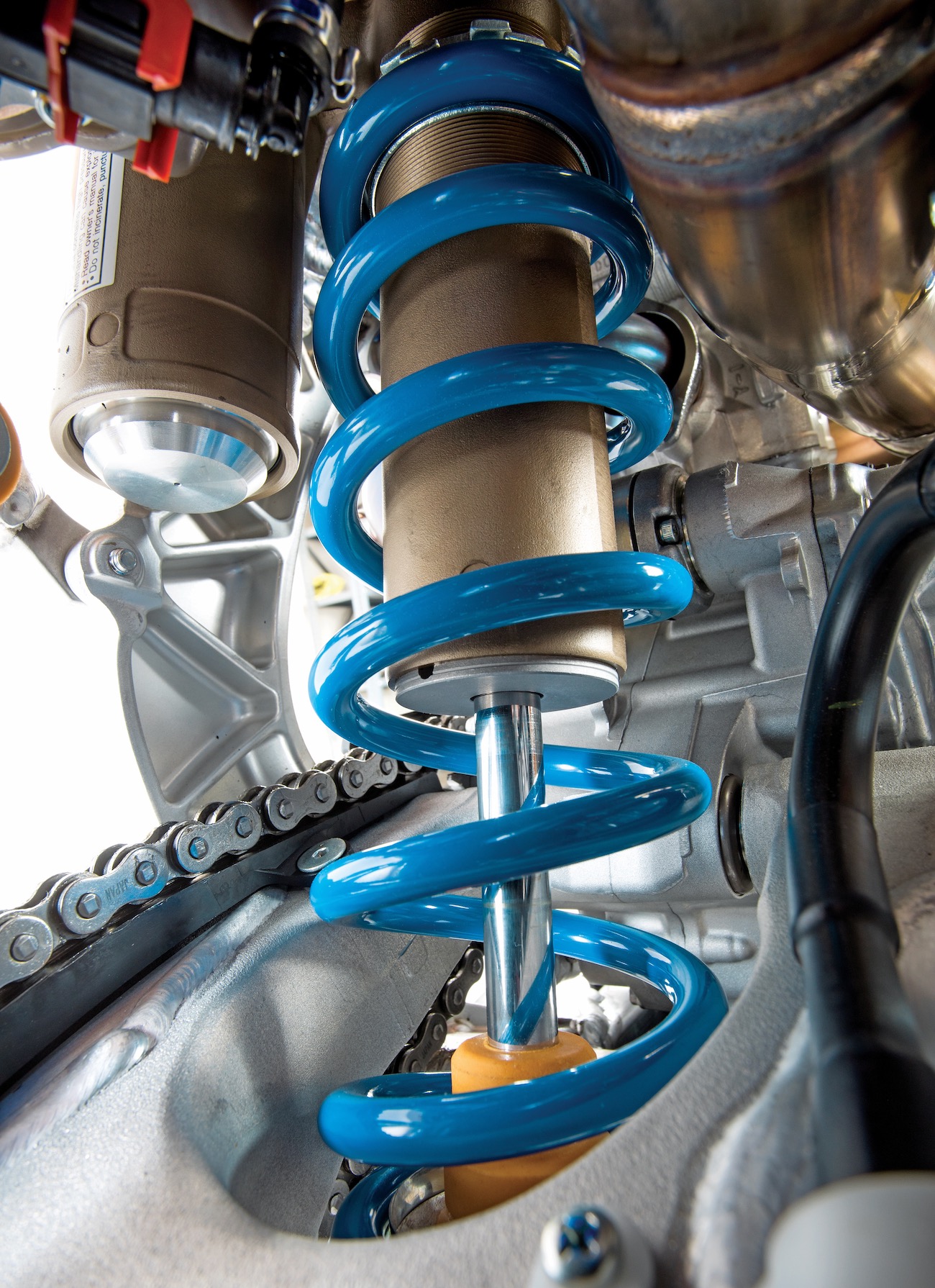
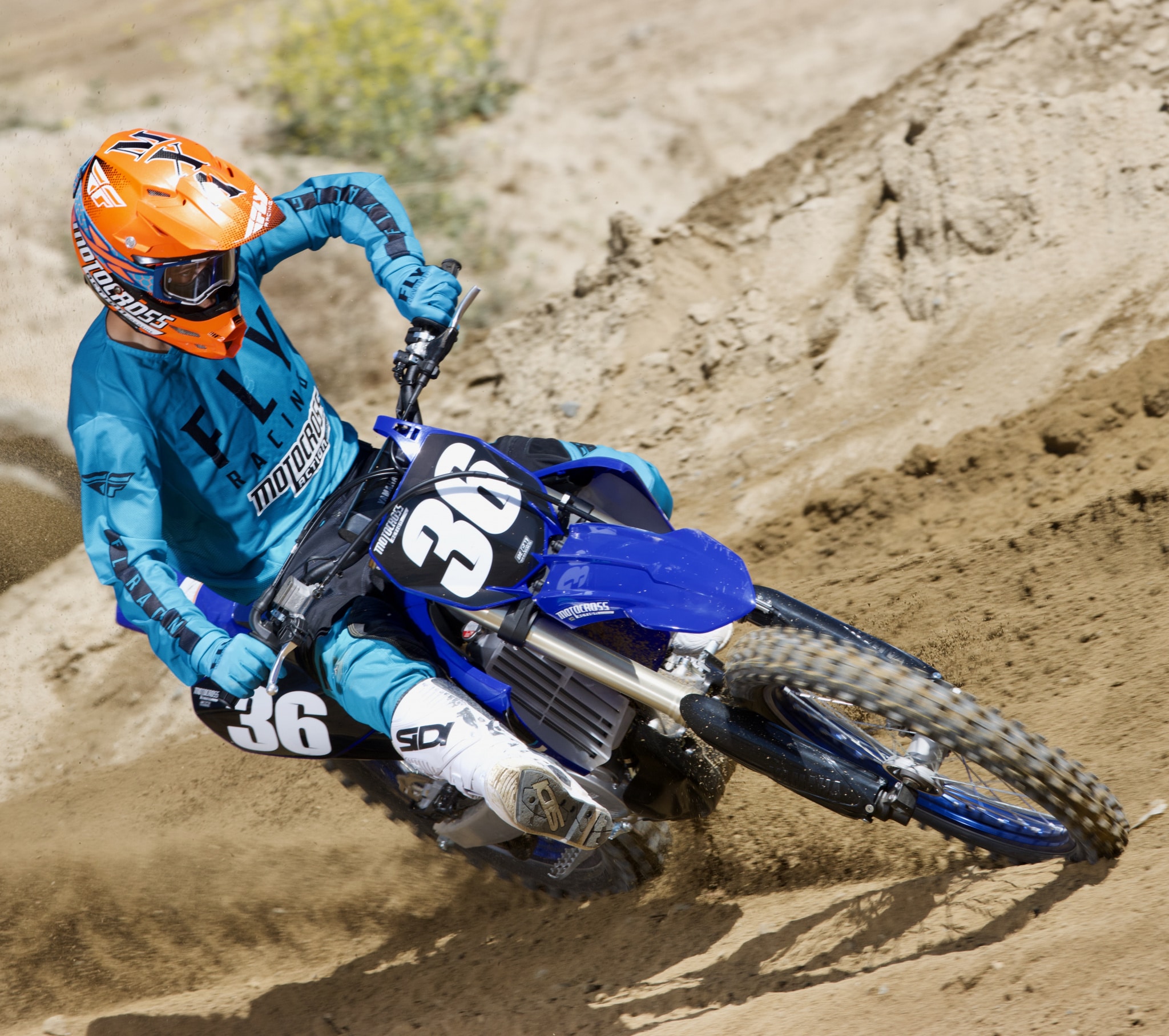
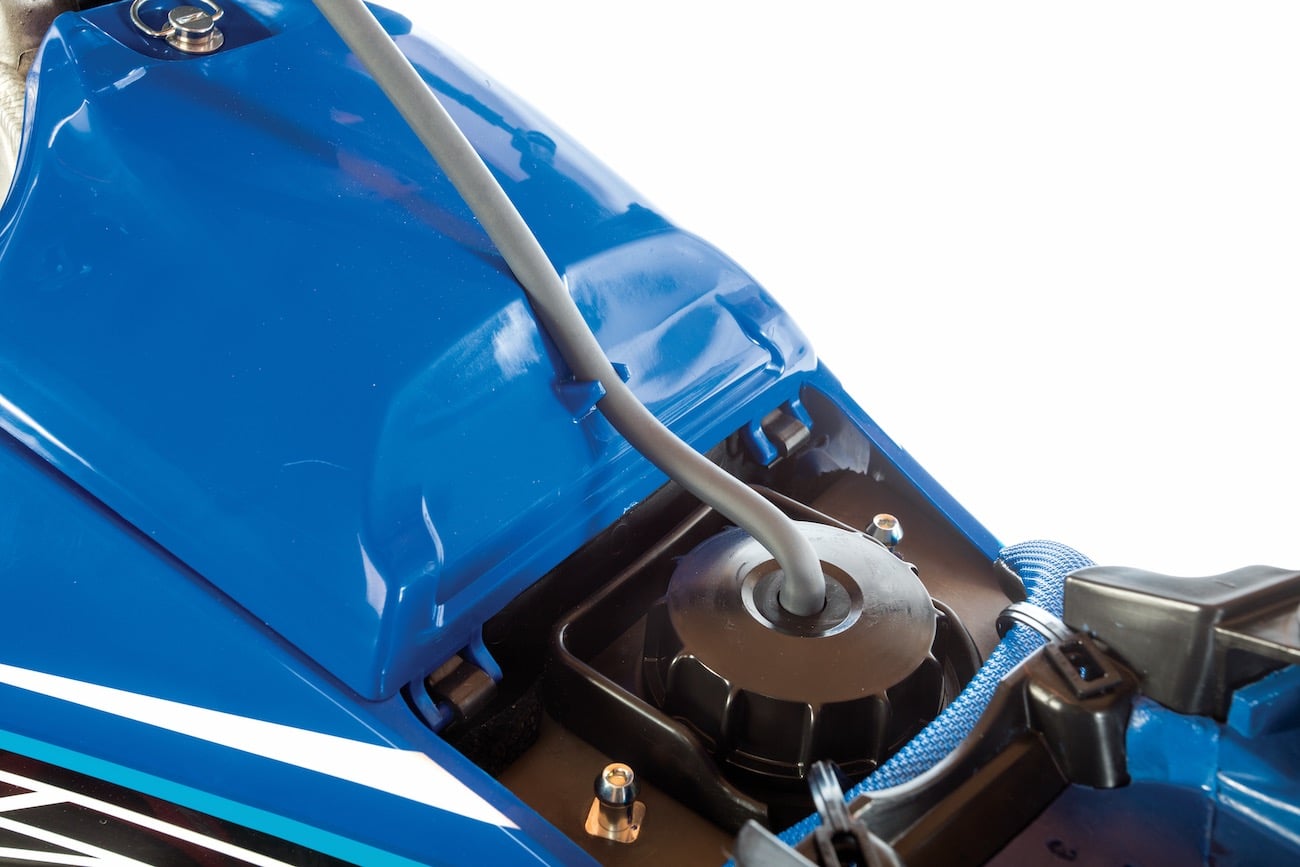

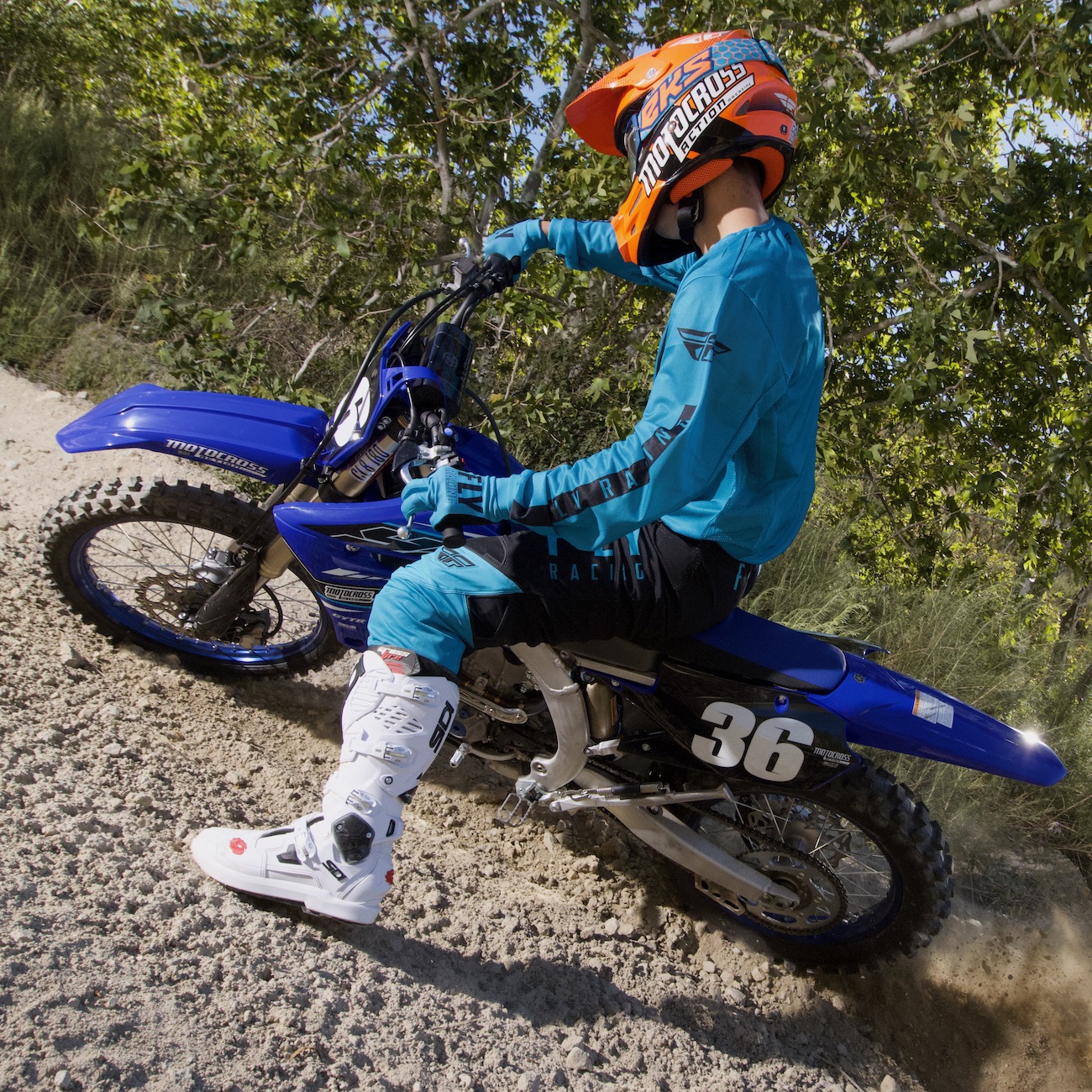
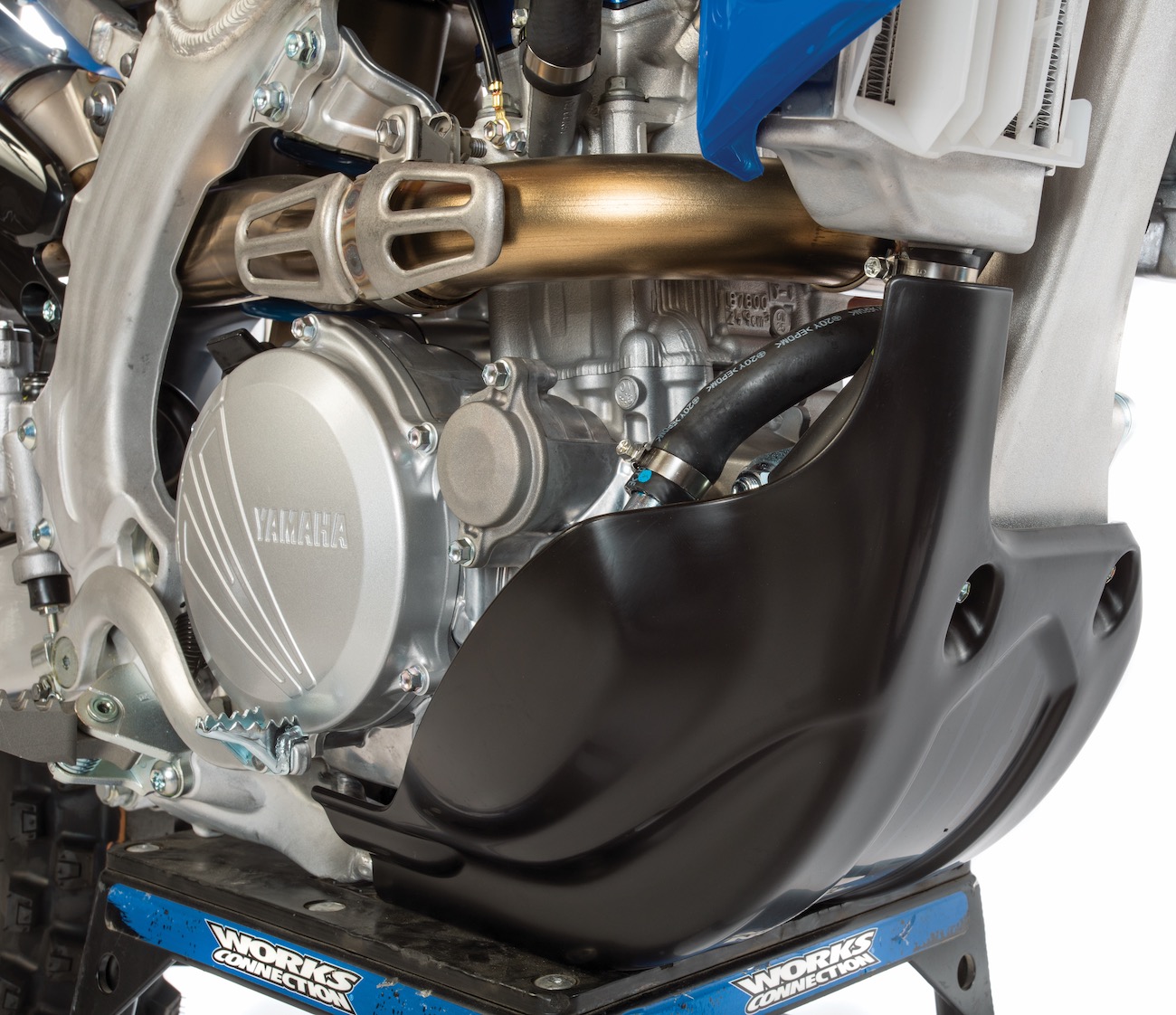
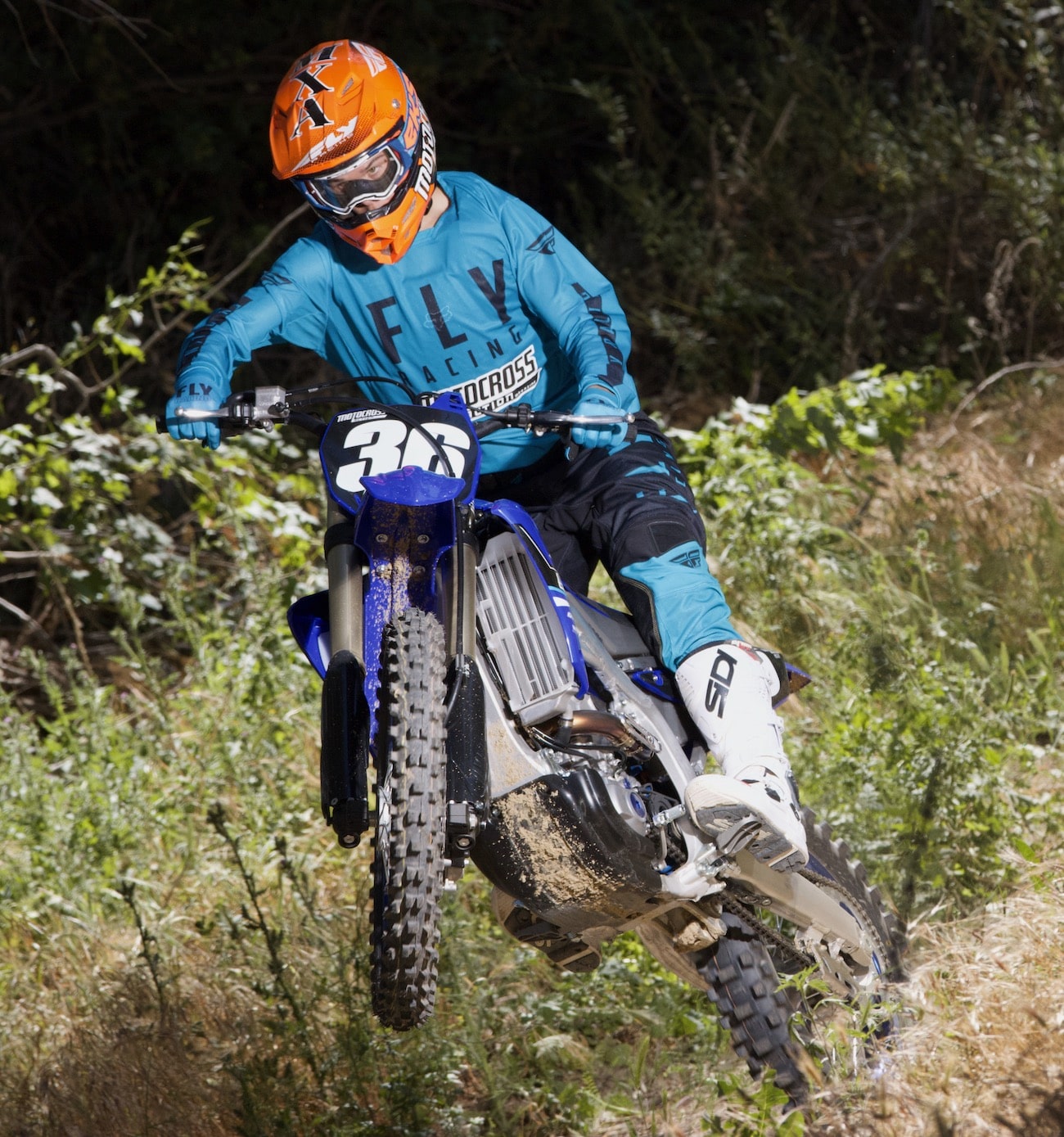
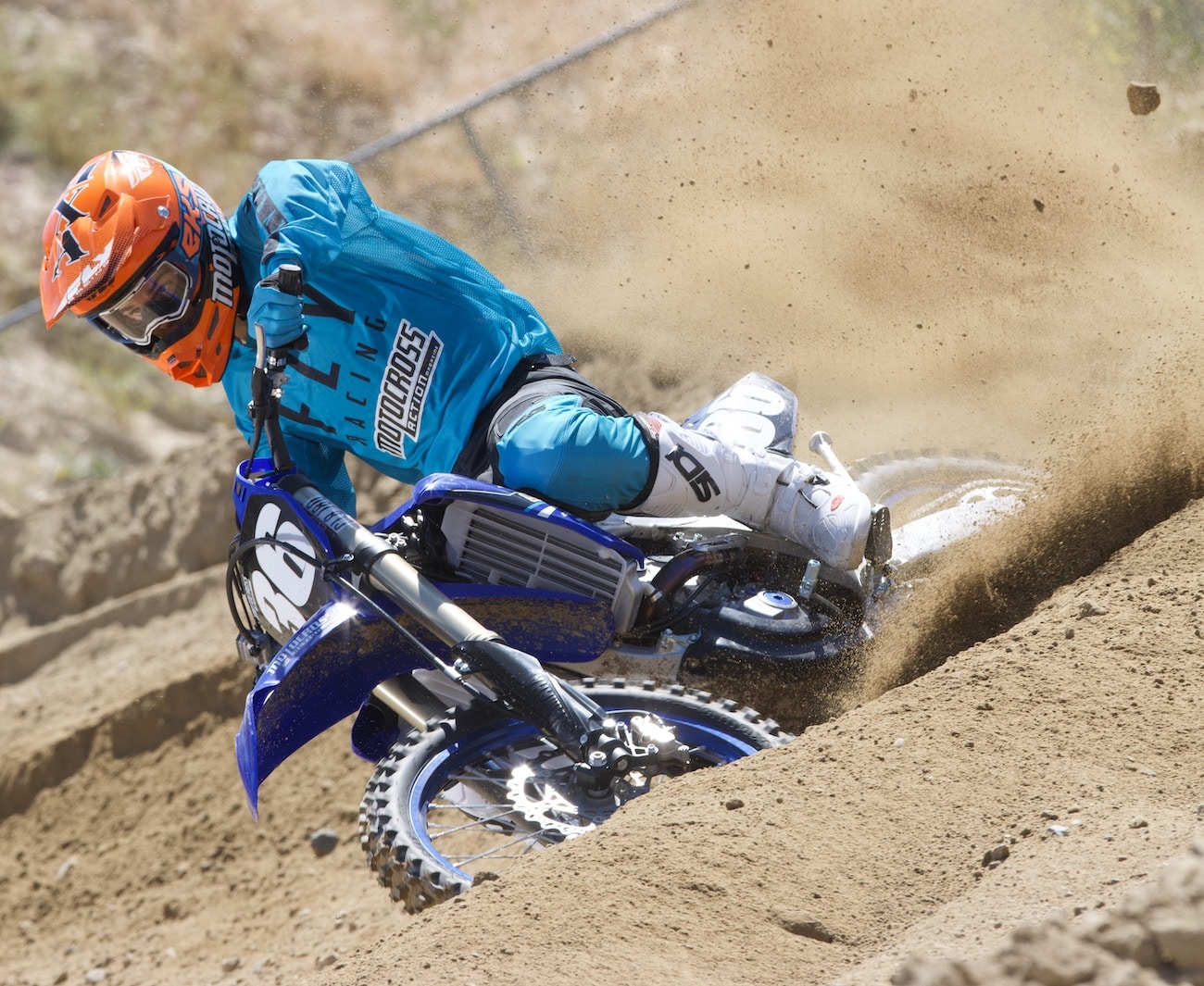



Comments are closed.